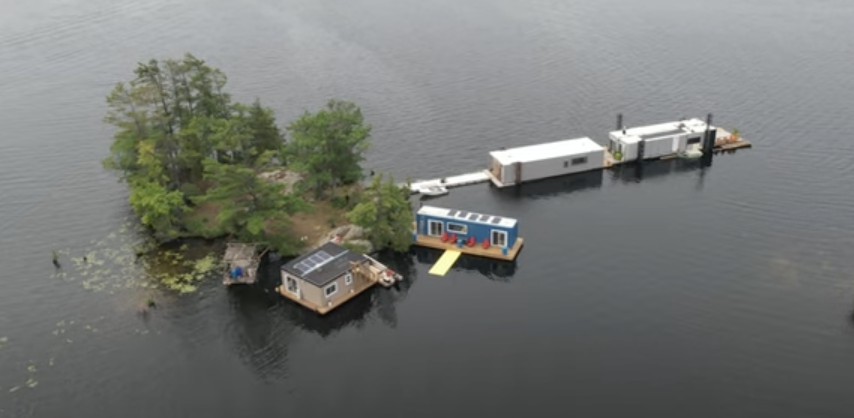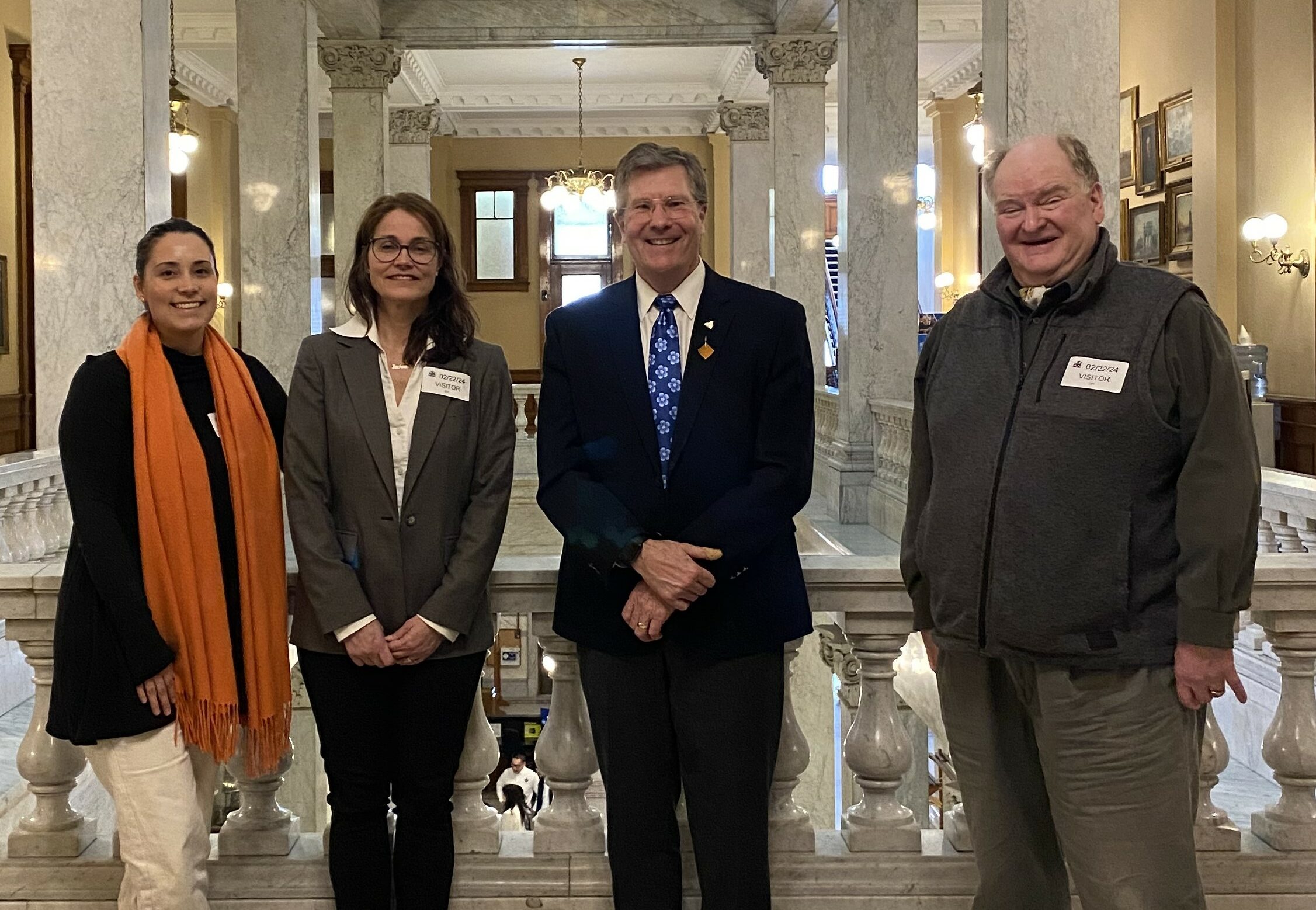2010-May-15
RATTLER LESSON
RATTLER LESSON – by Jim Bowden
I was bitten by a rattlesnake earlier this summer. My experience is worth telling. There are lessons to be learned, or at least reinforced. Even for a healthy adult, getting to a hospital post haste can be incredibly important – far more important than I had realized before this incident – and having a “plan” in place can save a life.
Also, I for one was truly impressed by how terrific the service was at our local hospitals for what was a life-threatening circumstance. We need these facilities, and we should be grateful to have them and their trained staff.
What Happened:
I had been out for dinner at my brother’s and, ignoring the warnings of my long-deceased mother, walked back through the woods (it’s maybe a 400 yard walk) wearing only sandals on my feet. I even spurned the use of a flashlight, it still being light enough – but only just light enough – to see the path.
About half way along, I felt sharp pain on the top of my foot, and just knew that I had been bitten by a rattler. It felt a little like a bee sting, although not as bad. There was no warning. I certainly didn’t see the serpent. I expect I stepped on it. That would explain perhaps how it was that I ended up with having been bitten three times (3 rapid shots from a really angry critter) and how it was that I ended up, apparently, with so much venom being injected into me. The seriousness of my particular situation can, in all likelihood, be ascribed to the amount of venom I must have received.
I had often wondered how I might react should I ever be bitten. I knew that it was important to stay calm and, if possible, immobile. Mercifully, I seemed able to go into slow motion, walking slowly and calmly the rest of the way to my cottage, where I washed off the wound and called 911.
A couple of minutes on the phone with the 911 people (my brother Craig being ultimately part of this) and we had arranged that I would meet an ambulance at our marina in Honey Harbour – faster than having the Township’s firefighters and emergency boat mustered. Craig and my niece Carolynn came over to help get me to the marina.
In the meantime, I had called Poison Control (911 had given me the number) and they told me not to ice the wound, not to use a tourniquet, and not to take any medication – just get to a hospital.
Good advice, apparently.
The three of us roared down to the marina (it’s about 8 miles), where the ambulance arrived at the same time we did. I should not have been the one to drive the boat, I found out later (although driving may have been helpful in keeping me calm).
Off I was whisked in the ambulance to the Georgian Bay Hospital in Midland, where a team was waiting for me. I was not feeling too bad at this point, but that suddenly changed dramatically. I started to lose consciousness, and found out later my pulse and blood pressure were tanking rapidly. I was on the verge of potential cardiac arrest. This was only about an hour (70 minutes – tops) after I had been bitten. Good thing I wasn’t trying to drive a car or boat at that point – and a really good thing I was in a hospital.
Doctor McNamara knew what to do, though – a shot of adrenaline and I was “back”.
But it was that close. The doctors say I probably was not about to die – but only probably. If I had been alone at the cottage at that point – well, we’ll never know.
So – it’s important not to dilly-dally!!
After that, I started feeling very nauseous – a typical symptom. They shot something into my veins that cleared that problem up, and before too long I was receiving my first vial ofantivenin.
There is no “normal” as to how much antivenin one might need, or how long one might require hospitalization but, to give some benchmark, I understood from the doctors that a hospital stay of maybe a day or two, with about 12 vials of antivenin (at $1,920 per vial, I might add), would likely suffice for most situations.
But not all situations are the same! I would require 38 vials (I’ll do the math for you – that’s $72,960) and 6 days in hospital, the majority of that being in Intensive Care.
The medical team at Midland’s Georgian Bay Hospital was in touch with their counterparts at the Parry Sound Health Centre, Ontario’s HQ for snake bites, and home to the snakebite gurus, Dr. Fargher and Dr. Jakubowski. Between the two medical teams, they decided I should be transferred to Parry Sound. While the treatment I was receiving seemed to have halted the advance of the venom, I wasn’t getting “better” the way that one would have expected from the extent of intervention to that stage. Later it was determined that I had, in fact, turned the corner by the time I was ambulanced to Parry Sound, but no-one knew it, as it takes a little time to do the blood work. I would be carefully monitored in Parry Sound (more tubes and wires stuck into and onto me than I can remember – and more blood samples taken than I ever want to have to go through again). I would still require more antivenin, but I’d be OK.
We can all complain about our Ontario hospitals’ emergency wards, but I am here to tell you that, in this situation, with a serious and urgent matter, I could not have had better care anywhere. There was no messing around, no waiting – just courteous and professional attention, both in Midland and in Parry Sound.
What a Massassauga Bite Does
There are a couple of stages, the first being what I experienced upon arrival at the hospital – a drop in pulse and BP. It is unusual to experience quite so dramatic an effect as I did, but that is probably attributable to the amount of venom I had received.
The secondary stage is the advance of the anti-coagulant and cytotoxic (tissue injuring) poison. Bitten in the foot, I would experience swelling and inflammation moving up my leg – and incredible pain in my foot (worse than a seriously sprained ankle). In fact, I was put on morphine for 3 or 4 days.
Really serious and long-term repercussions can face the victim if the poison gets into the internal organs, causing them to bleed and malfunction. I count myself so lucky that I got to a hospital so quickly and received the kind of early intervention that I did.
Then, even with proper and early medical attention, it can take a long, long while to get back to feeling a snappy 100% on a 24/7 basis.
The best thing to do: take care not to get bitten (and, incredibly, I am told many people are bitten in the course of trying to pick up a rattler). I for one never want to go through that again. Then, if bitten, get medical attention immediately. Having a “plan” thought out in advance (which should be in place for a snakebite or any other emergency) can save precious time.
Some further info
The last death from snakebite in Ontario was in 1962. In fact, Nora died in our boat. She had been bitten within maybe 150 yards from where I was bitten. In the course of discussing my situation with Dr. Fargher and Dr. Jakubowski, I mentioned the incident to them. They were most anxious to hear the details. Between the two of them, they have demonstrated a determined effort to try to locate the results of the autopsy that was conducted in that case. We (I’m doing what little I can to help) are working on this, but alas, it would appear that the records no longer exist. Still, the determination of this team in Parry Sound to find out everything they can about Massasauga bites in an effort to help people today is amazing.
The antivenin is manufactured (somewhat ironically) in Northern Ireland (remember the tale of St. Patrick?), and Ontario normally requires about 30 days’ lead-time to get a delivery.That time-line can be shortened for emergencies, everything falling into place, of course, but to put things in perspective, in requiring 38 vials, my situation used up over 20% of Ontario’s entire supply of antivenin. Last year, the Parry Sound Medical Centre dealt with close to a dozen cases of snakebite. Dr. Fargher and his team are doing their best to ensure there is enough antivenin available at all times, but it sounds as if we should maybe have a little more cushion.
Now a little history in Dr. Fargher words: “A couple of years ago (in 2007) the Province, in a cost-cutting move, had disbanded the Parry Sound based Ontario Provincial Massasauga Rattlesnake Antivenin Depot, the plan being to offload responsibility for antivenin to individual LHINs, of which there are 14 in Ontario. This was a ludicrous and potentially lethal situation as 11 LHINs could be expected to have to deal with a bite. Clearly most were unwilling to purchase sufficient antivenin, which has a 24-36 month half-life, and more often than not, with backorders of 4-6 months. West Parry Sound Health Centre, which had lobbied for and obtained funding to act as a provincial depot, was dismayed. They knew that they had barely enough for their needs, never mind everyone else. Luckily, strong support for reestablishment of the antivenin depot by Dr. Margaret Thompson, Ontario Poison Control, Mr. Bob Johnson, Toronto Metropolitan Zoo, local boards and various LHINs, especially the north-east LHIN, eventually paid off and although critically low levels of antivenom were experienced, no morbidity or mortality ensued before adequate funding was announced. This must not be allowed to happen again!!”
I should add a plug for the Georgian Bay Association as well, which also lobbied hard for these changes.
Verification
I want to thank Dr. Fargher in particular for his kind assistance in helping me get all my facts down accurately.
Helping Out
Whether it be for a snakebite, a heart attack or a serious injury, an incident such as this reminds us of how important these local hospitals are to us. Maybe you have already been assisted by one of these hospitals. You can help out by sending in something to help out. I’ll give you the contact info:
West Parry Sound Health Centre Foundation
6 Albert St
Parry Sound, ON
P2A 3A4
Ph 705 746 4540 X 3348
https://wpshcf.com/donate.now.html
Georgian Bay General Hospital Foundation
112 St. Andrews Dr
PO Box 760
Midland, ON
L4R 4P4
Attention: Christine Baguley, Development Associate
Tel 705 526 1300 X 5339
Fax 705 526 2007
baguleyc@gbgh.on.ca
So, there’s the story.
Many thanks to all those who helped me.
Avoid rattlesnakes.
Cheers
Jim Bowden












